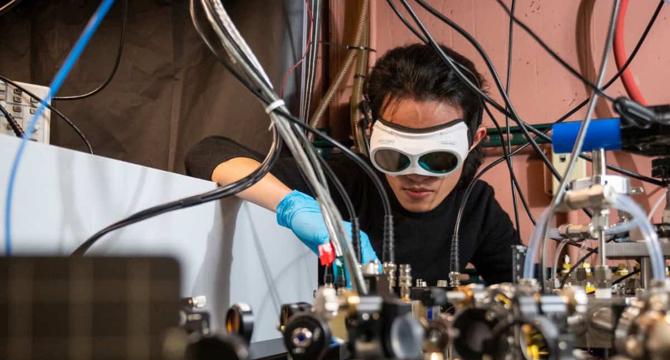Physicsworld
1M
58

Image Credit: Physicsworld
Frequency-comb detection of gas molecules achieves parts-per-trillion sensitivity
- A new technique for using frequency combs to measure trace concentrations of gas molecules has been developed by researchers in the US.
- The team reports single-digit parts-per-trillion detection sensitivity and extreme broadband coverage over 1000 cm-1 wavenumbers, enabling a variety of applications in fields such as medicine, environmental chemistry, and chemical kinetics.
- The researchers have used a combination of cavity ringdown spectroscopy and frequency comb lasers to probe the absorption of gas samples at different light frequencies.
- This new method allows the detection of various molecules, including biomedically relevant ones such as acetone and formaldehyde, with parts-per-trillion uncertainty, opening up possibilities for applications in trace gas detection and medical breath analysis.
Read Full Article
3 Likes
For uninterrupted reading, download the app